While the strikingly similar appearance of daffodils and jonquils makes it difficult for a layman to differentiate between these two flowers, horticulturists and gardening enthusiasts know that they are not the same. This Buzzle write-up elaborates on the characteristic features and the meaning of jonquil flowers.
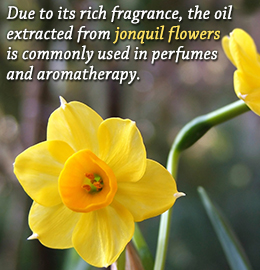
Every year, the arrival of spring is celebrated during the 3-day Annual Jonquil Festival held at the Historic Washington State Park in Washington, Arkansas.The harbinger of spring, daffodils are flowering plants that belong to
Narcissus genus and
Amaryllidaceae family. The flowers from this genus come in white or yellow hues. Their characteristic features include narrow, tubular base (hypanthium); three petals and three petal-like sepals (the perianth) in the outer part of the flower; and a central cup-like appendage (the corona, cup, or crown). Their bright yellow hue and trumpet-shaped corona (which might be of a contrasting hue) makes them hard to miss. To add to that, some of the species belonging to the genus give off a sweet fragrance.
There are around 200 species of daffodils and over 25,000 cultivars. The Royal Horticultural Society has placed the species and cultivars into 13 horticultural divisions on the basis of the shape of the flowers (characteristics or size of corona and perianth) and the growth habit. The wild species and hybrids are placed in the thirteenth division, while the rest of the divisions include the 'garden origin' plants. The seventh division includes jonquilla daffodils, whereas the species, wild variants, and wild hybrids are included in the thirteenth division. The term 'jonquil' is used for the species
Narcissus jonquilla. Though jonquil flowers might look similar to blooms from other species in the
Narcissus genus, there are some characteristic features that can help in differentiating jonquils from other species.
Jonquils Pictures and Plant Profile
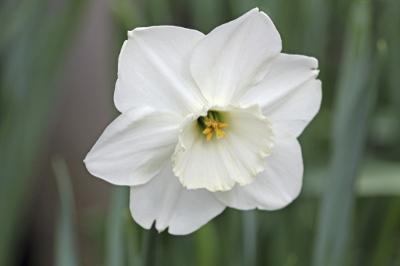
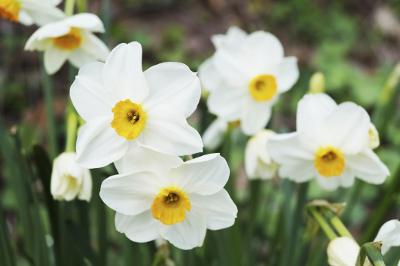

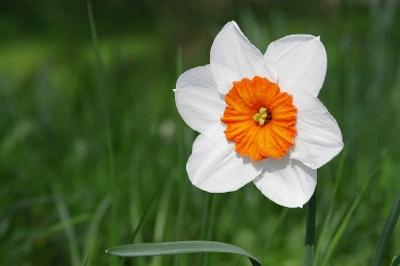
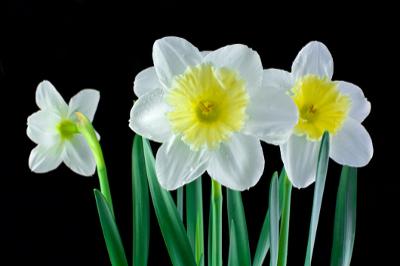
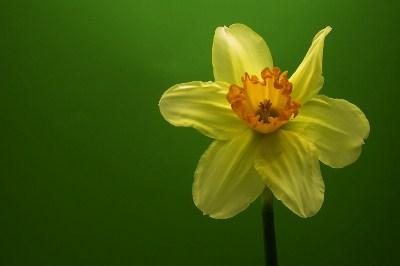
✦ Plant type: Perennial
✦ Genus:
Narcissus
✦ Family:
Amaryllidaceae
✦ Order:
Asparagales
✦ Subfamily:
Amaryllidoideae
✦ Native to: Spain, Portugal, Mediterranean regions, naturalized in Southern regions of United States of America
✦ Best time to Plant: Late spring or fall
✦ USDA Hardiness Zone: 4 to 9
✦ Light Requirement: Full sun, daily exposure of at least 6 hours of sunlight, or partial shade
✦ Watering: Water properly during the growing season
✦ Soil: Well-drained, slightly acidic soil
✦ Flowers: Trumpet-shaped flowers
✦ Flowering Season: Spring
✦ Colors: Yellow, white, with white/cream/yellow/orange corona
✦ Foliage Color: Medium to dark green
✦ Propagation: By division
✦ Diseases: Narcissus nematode, Narcissus basal rot, Narcissus yellow stripe virus
✦ Pests: Bulb scale mite, Narcissus bulb flies
✦ Other Characteristics: Heavily-scented flowers; flat petals; some parts of the plant are toxic
Difference Between Daffodils and Jonquils
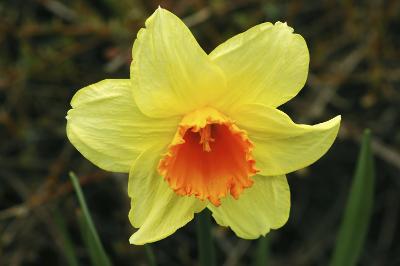
Daffodils
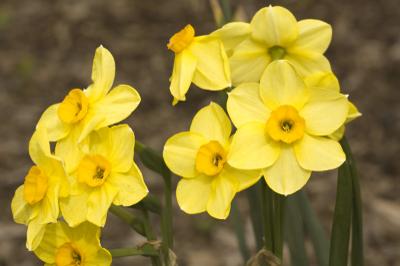
JonquilsDaffodils and jonquils belong to the same genus, order, family, and subfamily. Therefore, they might look the same to a layman. What mainly differentiates jonquils from daffodils is the foliage.
✦ Jonquils have narrow, reed-like leaves. While the leaves of jonquils are slender, their tips are rounded. In case of daffodils, the tips of the foliage are pointy. The green foliage of jonquils is darker than that of daffodils.
✦ Unlike daffodils where there is one flower on the stem, a single stem might bear clusters of jonquil flowers.
✦ The stems of jonquils are hollow and rounded, whereas daffodils have long, slender stems.
✦ The length of the corolla in jonquils is smaller than that of daffodils.
✦ Jonquils are very fragrant. Daffodils are not as fragrant as jonquils.
✦ Jonquil flowers are smaller in comparison to daffodils.
✦ Vibrant yellow is one of the common colors, when it comes to jonquil flowers. However, you can also find white-colored jonquils, or flowers that come in contrasting colors. The corona might be yellow, creamy yellow, or orange. Daffodils come in colors such as yellow, peach, pink, white, etc., with pale/deep yellow or deep orange coronas.
Symbolism of Jonquil Flowers
✦ The term 'daffodils' is commonly used for referring to all the flowers that belong to the genus
Narcissus, which is named after Narcissus, a young man who fell in love with his own reflection in a pool of water. Mesmerized by the beauty of his own reflection, he died by drowning while trying to embrace himself. As per the legend, daffodils grew at the place where he died. Therefore, the genus was named after Narcissus. These flowers are sometimes referred to as the flower of death.
✦ Jonquils or
Narcissus jonquilla get their name from the Spanish word 'jonquillo', which refers to rush or rush-shaped leaves of this plant.
✦ Jonquils are the birth flowers for those who are born in the month of March. As the birth flower, jonquils symbolize friendship and domestic bliss.
✦ When used in bouquets, these can represent desire, sympathy, or the desire for the return of affection. Gifting a jonquil can be one's way of telling that the feeling of affection is mutual and that the recipient is loved. They can also be given to show one's support during difficult times, or to those who have just experienced a traumatizing event. Their vibrant yellow color is sure to brighten one's day.
✦ Jonquils also symbolize sorrow. According to Greek mythology, Proserpina, the goddess of underworld was kidnapped by Pluto, the god of the underworld, when she was gathering lilies. Out of fear, she dropped the lilies, which turned into jonquils.
✦ Ancient Greeks considered them to be the flower of death, as they believed that this flower grew in the underworld.
✦ In some parts of the world, there is a superstition that a jonquil flower will not bloom, if anyone points to it.
✦ This flower is considered to be a New Year good luck symbol by the Chinese, who also carve the bulbs with a scalpel to create interesting shapes.
Growing Jonquils
If you wish to grow this plant, make sure that you plant jonquil bulbs at least 4 to 6 inches deep. Enrich the soil with a bulb fertilizer. Ideally, you should dig a hole that is around 3 to 4 times deeper than the height of the bulb. Place the bulb in this hole, with the pointy end facing upwards. Cover it with soil. Make sure that bulbs are placed at least 4 to 6 inches apart. Once the leaves appear, apply a small amount of general fertilizer with an NPK ratio of 10:10:10.
Do water the plant properly during the growing season, especially during dry spells. Reduce the frequency of watering after the flowering season. An annual application of compost will help nourish the soil. Once the bulbs have flowered, allow the foliage to die down naturally. You can divide the bulb clumps every 5 years in early summer.
Over the years, several hybrid varieties and cultivars of jonquils have been introduced. These cultivars produce vibrant-colored jonquils with contrasting corona. There's more to jonquil flowers than their bright hue. These flowers have also been used for making perfumes. Due to their aroma, they are also used in aromatherapy. Though they are slightly smaller than daffodils, they are definitely a good choice for floral arrangements.






 Every year, the arrival of spring is celebrated during the 3-day Annual Jonquil Festival held at the Historic Washington State Park in Washington, Arkansas.The harbinger of spring, daffodils are flowering plants that belong to Narcissus genus and Amaryllidaceae family. The flowers from this genus come in white or yellow hues. Their characteristic features include narrow, tubular base (hypanthium); three petals and three petal-like sepals (the perianth) in the outer part of the flower; and a central cup-like appendage (the corona, cup, or crown). Their bright yellow hue and trumpet-shaped corona (which might be of a contrasting hue) makes them hard to miss. To add to that, some of the species belonging to the genus give off a sweet fragrance.
Every year, the arrival of spring is celebrated during the 3-day Annual Jonquil Festival held at the Historic Washington State Park in Washington, Arkansas.The harbinger of spring, daffodils are flowering plants that belong to Narcissus genus and Amaryllidaceae family. The flowers from this genus come in white or yellow hues. Their characteristic features include narrow, tubular base (hypanthium); three petals and three petal-like sepals (the perianth) in the outer part of the flower; and a central cup-like appendage (the corona, cup, or crown). Their bright yellow hue and trumpet-shaped corona (which might be of a contrasting hue) makes them hard to miss. To add to that, some of the species belonging to the genus give off a sweet fragrance.




 ✦ Plant type: Perennial
✦ Plant type: Perennial
